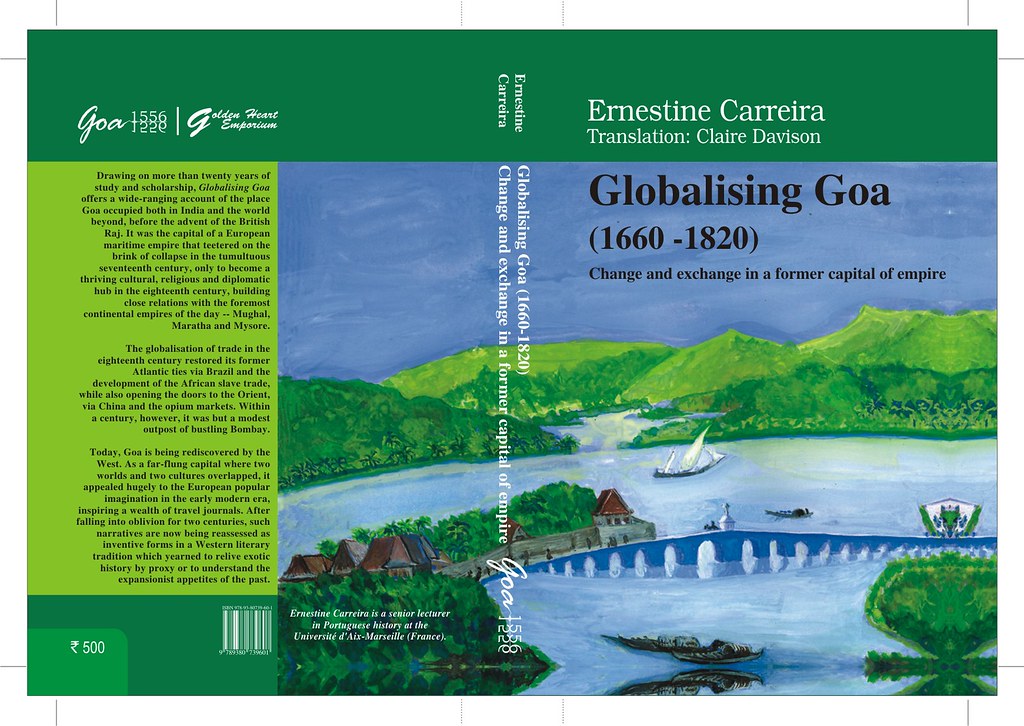A strain of
history-writing that has recently gained some attention is that of “global
history”. The writing of global history, especially of the 16th to the 18th
centuries, is a simultaneously challenging and exciting task for professional
historians and students. Exciting because at a time when it took months or even
years to sail from one continent to the other, people, goods, ideas, and
cultural practices traveled from one place to another. But these influences did
not just travel; they had a deep and transformational impact on the history and
culture of the recipient peoples and societies.
All too often
the writing of global history that stresses global connections is met with
outrage. Were there no historical developments of our own, locals often ask. These
questions become crucial and fraught with dangers as global histories appear to
be another way of saying that Europe was supreme, and influenced the rest of
the world. This is to miss the point of global historiography because when
global histories are written outside of Europe one can observe how these global
connections had a profound impact on Europe itself. Further, global history need
not be written only with reference to Europe. One can be creative and even try
to understand the history of Goa, say, from the perspective of Mozambique.
For some time
now I have been toying with the idea that Goan history should be, or is
essentially, a global one. That is, the international connections through which
Goan history emerges are not only crucial but are the chief creators of Goan history. If ‘global’ is too ambitious or
too ideologically fraught a term one could label such connections as
‘trans-oceanic’ or ‘trans-continental’ or simply ‘connections’. However, the
importance of connections, regardless of their dimensions, remains true. Thus, while
writing the history of Goa one seeks connections not only with Portugal but
also with the neighboring Deccan regions and its polities, as well as the
polities on the western coast of the Arabian Sea and the Indian Ocean.
Ernestine
Carreira’s Globalising Goa (1660-1820):
Change and Exchange in a Former Capital of Empire (2014) is concerned precisely
with discussing the connections that the Estado
da Índia had with Portugal, Brazil, the Marathas, and other European powers
in the Indian Ocean. Carreira, who teaches Portuguese history at the University
of Aix-Marseille in France, gives equal importance to the political
developments wrought by European and local powers. Further, her book also hints
at the simultaneous development of the Goan identity.
For instance,
take Carreira’s discussion of how the territories of the Novas Conquistas were
conquered and/or integrated into the Goan segment of the Estado, which until then comprised only of what subsequently came
to be called the Velhas Conquistas. What we today identify as the territory of
Goa was linked to certain definite developments in Brazil. During the reign of
Dom João V (1689-1750) new gold mines were discovered in Brazil which provided
Portugal with much needed bullion. These resources were used to finance the
army which won against local feudatories. With military victories and
diplomatic negotiations, new territories and people came under the rule of the Estado. In a similar way, Carreira
writes about other events and developments in the India Ocean or in the Deccan
region that had a deep impact on Goa.
There is
something else that can be said about the Goan identity from the abovementioned
anecdote. There is a tendency in Goa to link Goan history to the Indian nation
as a default reflex. Many times this proves to be historically inaccurate. As
the above anecdote shows, large parts of what is today indubitably considered Goan
became Goan due to the unstable
polities on the borders of the Estado.
How different local feudatories interacted with the Estado changed the identity of many population groups from the
1750s. Therefore, Goa emerged (and is indeed continues to emerge) slowly
through concrete historical processes.
Apart from the
conceptual concerns, Carreira’s work also tries to intervene in the area of
Goan academia in general and Goan historiography in particular. Like Raghuraman
Trichur and other scholars have recently asserted, Carreira too suggests that Goan
academia is hardly a place of lively debate. In terms of Goan historiography, Carreira
rightly notes that after an initial spurt of publications in the ’80s and ’90s
by organizations such as the Xavier’s Center of Historical Research, there are
few institutions today that are interested in furthering historical research
about Goa. While there are many scholars – such as Carreira herself – who would
like to devote themselves to research on Goa, they lack precisely the support
system and academic infrastructure crucial to develop historical research. The
consequences of such apathy towards historical research are indeed grave.
Apart from the
fact that historical interpretations can be propagated by politically misguided
persons, the actual archives too get neglected. Without an organized and vocal
interest-group, there is nothing to stand between the archives and the ravages
of time and climate that decimate these holdings. Goa’s state archives, like
the numerous historical monuments, are the patrimony of all Goans, regardless
of their political or cultural affiliation.These archives are significant because
they can not only reveal, but also have the potential to change, our collective
memory of the past. Well-kept and well-used archives, and libraries, are also a
sign that governmental and cultural institutions are serious about the culture
of the place, which fosters a community spirit. Institutions in Goa need to
recognize it and seriously invest in such bodies.
But nonetheless,
students and researchers of Goan history should be glad that they have a
rigorously researched study for reference. Call it global, trans-oceanic, or any
other name, Carreira’s work reminds us that the connections that Goa had with
other regions and peoples are not only very important to study but critical to
an appreciation of the Goan past and present.
(First published in O Heraldo, dt: 18 January, 2017)


No comments:
Post a Comment